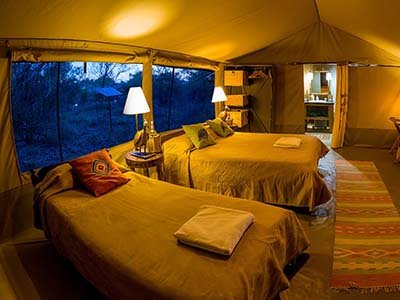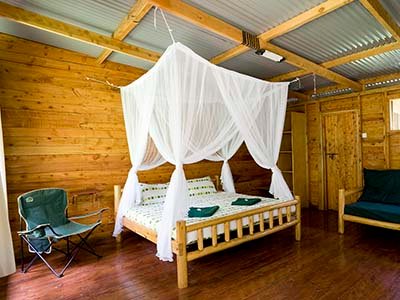Simien Mountains National Park
Simien Mountains National Park (SMNP) is a must-visit location for anybody visiting Ethiopia due to its breathtaking flora and fauna This spectacular park, which was listed as a UNESCO World Heritage Site in 1979, is located approximately 100 km north of Gondar and is home to the Simien Massif, a high plateau of old volcanic rock that has been carved into steep, precipice-filled cliffs and chasm-like river basins.
The Simien Massif is home to at least a dozen peaks that rise over 4,000 metres, including the 4,550-meter Ras Dejen (also known as Ras Dashen), which is the highest mountain in Ethiopia and the fourteen highest mountain in Africa. Simien Mountains National Park (SMNP) was established in 1966 to protect the westernmost portion of the range. Since then, it has been enlarged eastward to include Ras Dejen and many more peaks of a similar height, totalling 412 km2.
Afroalpine Guassa grassland with giant lobelia shrubs above the 3,500 m contour, large tracts of Afromontane forest, a medium-altitude ericaceous belt dominated by heather tussocks, and many other habitats are all included in the 2,600 m-high SMNP. The park serves as a vital refuge for endangered species including the endangered Walia ibex, Gelada monkey, and Ethiopian wolf due to the variety of ecosystems it supports.
But SMNP is an exceptional travel destination for many reasons than only the animals. Visitors may explore the park on a three to ten-day walk or mule journey, perhaps including an ascent of Ras Dejen and other peaks. The view is very stunning. If you prefer less demanding activities, SMNP is now accessible for overnight stays as well as less demanding day hikes and drives thanks to the recent building of an excellent all-weather road extending deep into the park and the establishment of Simien Lodge near to the main entry gate.
Flora and Fauna of Simien Mountains National Park
For both nature lovers and adventurers, Ethiopia’s Simien Mountains National Park is a paradise. The park is home to a wide variety of unusual plants and animals that are exclusive to the Simien Mountains’ high-elevation regions.
The park’s vegetation is a mix of alpine vegetation, wilderness woods, and African alpine forests. Montane savannah and tree heath, gigantic lobelia, yellow primrose, everlastings, a lady’s mantle, and mosses may be found in high altitude regions. The alpine region’s trees are covered with lichen, making for an amazing image.
Three distinct plant types may be found in the park: the Ericaceous Belt or SubAfroalpine (2700-3700m), the Afroalpine (3700-5433m), and the Montane Forest (1900-3000m). There are juniper trees, African olives, African redwoods, waterberry, and figs in the montane forest.

The park also features a diverse range of vegetation, including cowslip, stinging nettle, cocona, and Abyssinian rose. A diversified and beautiful scenery is created by the hills and canyons’ scatted meadows, woodlands, and shrubs.
There are 21 different types of big mammals that live in the park, which is home to a wide variety of unusual and intriguing creatures. A few of the animals that live in the park are the Menelik’s bushbuck, Ethiopian wolf, Walia ibex, and gelada baboon. The majority of the creatures in the park are unique to the Simien Mountains and only found there.
During your stay, you could also see the Anubis and Hamadryas baboons, the colobus monkey, the leopard, the serval cat, the wild cat, the golden jackal, and the spotted hyena. Small herbivores like the klipspringer, common duiker, and rock hyrax live in the park as well.
The park is home to a variety of rodents and shrews that are native to the Ethiopian Plateau in addition to the huge animals. Two shrew species and 11 rodent species were identified during an expedition in 2015, seven of which had only been seen in the Simien Mountains.
Additionally, the mountainous ecoregion of the park is home to 172 species of birds, including the Spot-breasted Plover, Black-winged Lovebird, Ankober Serin, Salvadori’s Serin, Yellow-throated Seedeater, Thick-billed Raven, Abyssinian Longclaw, Rüppell’s Chat, White-winged Cliff Chat, Ethiopian Thrush, Abyssinian Catbird, White-backed Black Tit, Ethiopia black-headed oriole
There are also more noteworthy birds, such as the Bearded vulture, Rüppell’s vulture, Tawny eagle, Eurasian kestrel, Verreaux’s eagle, and Augur buzzard lanner falcon.
The full list of birds can be got from Avibase – Bird Checklists of the World Simien Mountains National Park
Activities in and around Simien Mountains National Park
Simien Mountains National Park provides a variety of exciting things to do for tourists to enjoy. Wildlife viewing is a must-do activity for nature lovers. The park is a special location for nature enthusiasts since it is home to the endangered Walia ibex, Ethiopian wolf, and Gelada monkey.
The park offers a variety of hiking possibilities for those looking for excitement. For those who wish to experience the breathtaking scenery of the park, the Debark to Chenek walk is a well-liked choice. The hike provides breathtaking views of the park’s elevated plateau, old volcanic rock formations, and towering, sheer cliffs. The Chenek to Mt.Bwahit and return journey is another that is highly recommended. Hikers may experience the spectacular dawn and sunset views while enjoying the breathtaking vistas of the surrounding mountains on this walk.
Climbing Ras Dashen is a memorable experience for those who are ready for the task. It is the tallest peak in Ethiopia and the sixth tallest mountain in all of Africa at 4,533 metres. The climb takes a high degree of fitness and endurance and is not for the faint of heart.
A day trip to Chenek is an excellent choice if you just have a short amount of time. In addition to seeing the rare fauna and taking in the breathtaking surroundings, visitors may picnic in the lovely Chenek camping area.
A trip to the adjacent Argin Village is another fantastic pastime. The village offers a special chance to learn about the customs and local culture of the Ethiopian people and is near to the park. Visitors may discover the local customs, experience the food, and purchase handicrafts produced in the area.
Frequently Asked Questions:-
Where is Simien Mountains National Park located?
Simien Mountains National Park is located in the northern part of Ethiopia, specifically in the Amhara region. It covers an area of approximately 220 square kilometers and is part of the Ethiopian Highlands, a UNESCO World Heritage Site.
What is the history of Simien Mountains National Park?
The Simien Mountains have a rich history that dates back to prehistoric times. The park was established in 1969 to protect the unique wildlife and stunning landscapes. In 1978, it was designated as a UNESCO World Heritage Site in recognition of its outstanding natural beauty and ecological significance.
What are the unique features of Simien Mountains National Park?
The Simien Mountains are known for their dramatic landscapes, including rugged peaks, deep gorges, and sharp precipices. The park is also home to several unique wildlife species, including the Ethiopian wolf, gelada baboon, and walia ibex. The park’s unique features make it one of the most breathtaking destinations in Africa.
What kind of wildlife can be found in Simien Mountains National Park?
Simien Mountains National Park is home to a variety of unique wildlife species, including the Ethiopian wolf, gelada baboon, and walia ibex. Other notable species include the klipspringer, bushbuck, and rock hyrax. Visitors can also spot several bird species, such as the lammergeier and Verreaux’s eagle.
What are the best activities to do in Simien Mountains National Park?
Some of the best activities to do in Simien Mountains National Park include wildlife watching, trekking, and climbing. The park offers several hiking trails that lead to stunning viewpoints and unique wildlife habitats. Visitors can also take day trips to nearby villages, such as Chenek and Argin.
How do I get to Simien Mountains National Park?
The nearest city to Simien Mountains National Park is Gondar, which can be reached by air or road. From Gondar, visitors can hire a car or take a public bus to Debark, the gateway town to the park. Once in Debark, visitors can hire a guide and arrange transport to the park’s entrance.
What is the best time to visit Simien Mountains National Park?
The best time to visit Simien Mountains National Park is between October and April when the weather is dry and cool. The park is also at its most beautiful during this time, with lush vegetation and stunning views. However, visitors should be prepared for cold temperatures at night.
What kind of accommodation options are available in Simien Mountains National Park?
Accommodation options in Simien Mountains National Park range from basic campsites to luxury lodges. The park has several campsites and guesthouses, including one at Chenek. Visitors can also stay in nearby towns, such as Debark and Gondar, which offer a wider range of accommodation options.
What are the important tips for visitors to Simien Mountains National Park?
Visitors to Simien Mountains National Park should come prepared for cold temperatures, especially at higher elevations. They should also bring sturdy hiking boots, warm clothing, and plenty of sunscreen and insect repellent. It’s also important to hire a guide and respect the park’s wildlife and natural resources.
How much does it cost to visit Simien Mountains National Park?
The cost of visiting Simien Mountains National Park varies depending on the type of accommodation and activities chosen. Entrance fees to the park are currently $40 per person per day for non-residents and $20 per person per day for Ethiopian residents. Visitors should also budget for the cost of hiring a guide and transportation.




